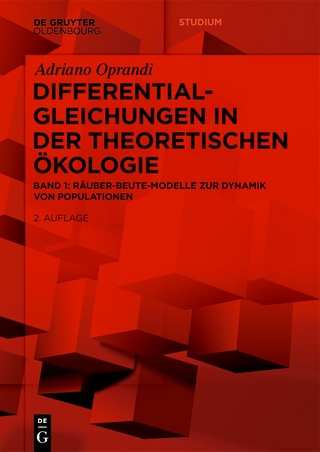
Convex and Starlike Mappings in Several Complex Variables
Seiten
1999
Springer (Verlag)
978-0-7923-4964-8 (ISBN)
Springer (Verlag)
978-0-7923-4964-8 (ISBN)
Deals with the theory of convex and starlike biholomorphic mappings in several complex variables. This title gathers together, and presents the affairs for convex and starlike biholomorphic mappings in several complex variables.
This interesting book deals with the theory of convex and starlike biholomorphic mappings in several complex variables. The underly- ing theme is the extension to several complex variables of geometric aspects of the classical theory of univalent functions. Because the author's introduction provides an excellent overview of the content of the book, I will not duplicate the effort here. Rather, I will place the book into historical context. The theory of univalent functions long has been an important part of the study of holomorphic functions of one complex variable. The roots of the subject go back to the famous Riemann Mapping Theorem which asserts that a simply connected region n which is a proper subset of the complex plane C is biholomorphically equivalent to the open unit disk ~. That is, there is a univalent function (holo- morphic bijection) I : ~ -+ n. In the early part of this century work began to focus on the class S of normalized (f (0) = 0 and I' (0) = 1) univalent functions defined on the unit disk. The restriction to uni- valent functions defined on the unit disk is justified by the Riemann Mapping Theorem.
The subject contains many beautiful results that were obtained by fundamental techniques developed by many mathe- maticians, including Koebe, Bieberbach, Loewner, Goluzin, Grunsky, and Schiffer. The best-known aspect of univalent function theory is the so-called Bieberbach conjecture which was proved by de Branges in 1984.
This interesting book deals with the theory of convex and starlike biholomorphic mappings in several complex variables. The underly- ing theme is the extension to several complex variables of geometric aspects of the classical theory of univalent functions. Because the author's introduction provides an excellent overview of the content of the book, I will not duplicate the effort here. Rather, I will place the book into historical context. The theory of univalent functions long has been an important part of the study of holomorphic functions of one complex variable. The roots of the subject go back to the famous Riemann Mapping Theorem which asserts that a simply connected region n which is a proper subset of the complex plane C is biholomorphically equivalent to the open unit disk ~. That is, there is a univalent function (holo- morphic bijection) I : ~ -+ n. In the early part of this century work began to focus on the class S of normalized (f (0) = 0 and I' (0) = 1) univalent functions defined on the unit disk. The restriction to uni- valent functions defined on the unit disk is justified by the Riemann Mapping Theorem.
The subject contains many beautiful results that were obtained by fundamental techniques developed by many mathe- maticians, including Koebe, Bieberbach, Loewner, Goluzin, Grunsky, and Schiffer. The best-known aspect of univalent function theory is the so-called Bieberbach conjecture which was proved by de Branges in 1984.
I Criteria for starlikeness for holomorphic mappings.- II Criteria for convexity for holomorphic mappings.- III The growth theorem for holomorphic starlike mappings.- IV The growth theorem for holomorphic convex mappings.- V The distortion theorem for the linearinvariant family.- VI The distortion theorem for holomorphic convex and starlike mappings.- VII The geometrical properties for holomorphic convex mappings on the unit ball.- References.- List of symbols.
| Erscheint lt. Verlag | 30.4.1999 |
|---|---|
| Reihe/Serie | Mathematics and Its Applications ; 435 | Mathematics and Its Applications ; 435 |
| Zusatzinfo | XIII, 209 p. |
| Verlagsort | Dordrecht |
| Sprache | englisch |
| Maße | 155 x 235 mm |
| Themenwelt | Mathematik / Informatik ► Mathematik ► Analysis |
| ISBN-10 | 0-7923-4964-4 / 0792349644 |
| ISBN-13 | 978-0-7923-4964-8 / 9780792349648 |
| Zustand | Neuware |
| Informationen gemäß Produktsicherheitsverordnung (GPSR) | |
| Haben Sie eine Frage zum Produkt? |
Mehr entdecken
aus dem Bereich
aus dem Bereich
Buch | Softcover (2024)
De Gruyter Oldenbourg (Verlag)
59,95 €


